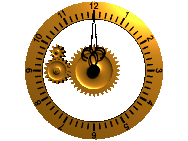




Chloroform, or trichloromethane (often abbreviated as TCM), is an organic compound with the formula CHCl3. It is a very volatile, colorless, strong-smelling, dense liquid, and serves as a powerful anesthetic, euphoriant, anxiolytic, and sedative when inhaled or ingested. Chloroform was used as an anesthetic between the 19th century and the first half of the 20th century.
Chloroform is known to be carcinogenic in animals, however, there is no evidence that the same applies to humans due to the absence of studies. It is simply assumed that it is carcinogenic in humans too. One additional danger with chloroform is that it slowly decomposes into phosgene, which is a compound with the formula COCl2. Phosgene is extremely poisonous and was used as a chemical weapon during World War I.
The following tutorial shows how chloroform can easily be made from household items:
The products needed are:
The process for making chloroform is very simple. Sodium hypochlorite from the bleach reacts with acetone to give chloroform, sodium hydroxide, and sodium acetate. The reaction equation is:

The molar masses of the reactants are:
| NaClO3 | 74.44 g/mol |
| C3H6O | 58.08 g/mol |
Their mass densities are:
| NaClO3 | 1.10 g/mL |
| C3H6O | 0.784 g/mL |
Our bottle contains 3.57 liters of 7.5% bleach. We remove 150 ml in order to make room for the acetone, and have extra space to shake the mixture. Thus, we are left with 3.42 liters of bleach. Using the molar mass and the mass density tables above, we conclude that we need 93.4 ml of acetone for all the reactants to be consumed. However, it is better to have extra sodium hypochlorite than extra acetone, because acetone forms an azeotrope with chloroform, which makes it hard to separate the two products. Thus, we use only 90 ml of acetone. This allows us to predict a maximum yield of 97 ml of chloroform. Watch the video tutorial for the details on the calculation.
Not sure you want to subscribe? Take a peek at the description of the Blue Moonshine channel to get an idea of its contents.